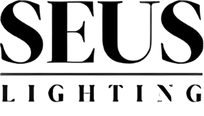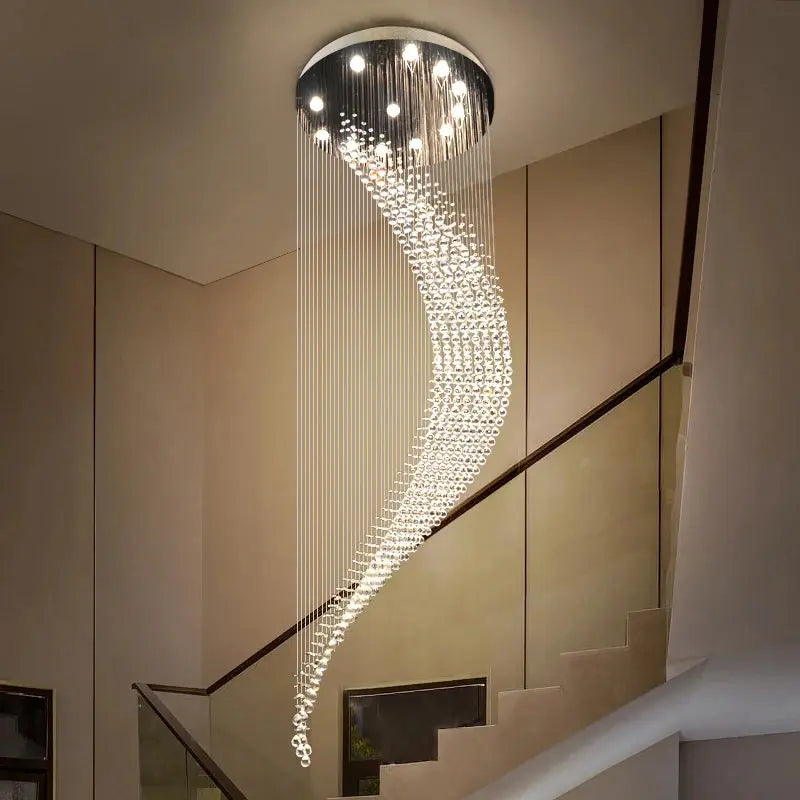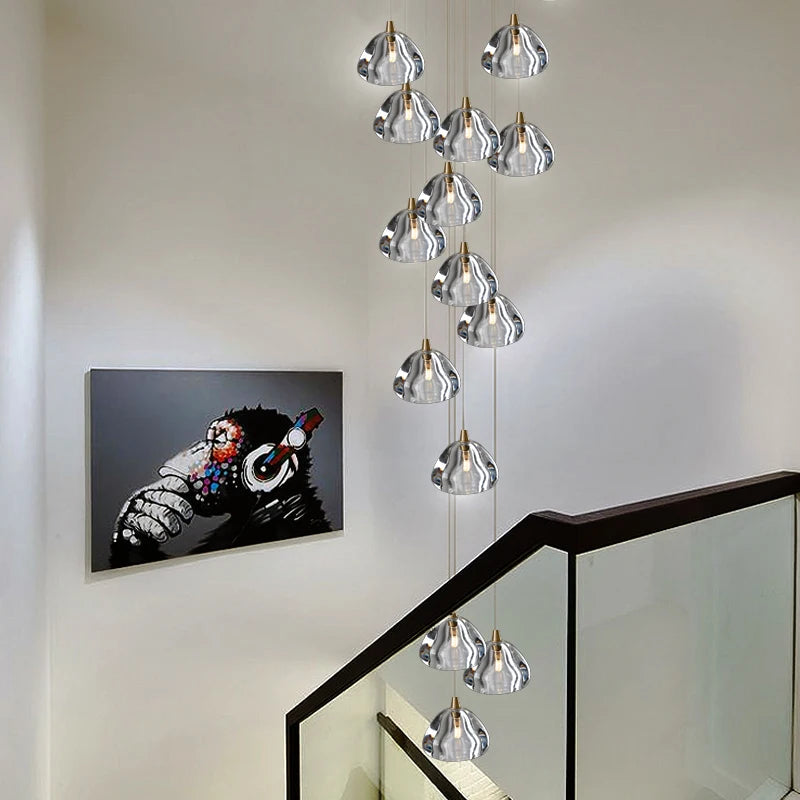Your foyer is the first space guests see when they enter your home, and the lighting you choose sets the tone for everything that follows. Get it wrong, and your entryway feels cramped or unwelcoming. Get it right, and you create a space that makes a lasting first impression.
Here's the thing: most people overthink foyer lighting. They get paralyzed by Pinterest boards showing grand chandeliers they can't fit, or they pick a fixture that looks great in the store but disappears once installed. The truth is simpler. You need a fixture that fits your ceiling height, provides enough light, and matches your style. Everything else is noise.
This guide cuts through the confusion. We'll cover the main fixture types, sizing rules that actually work, and how to avoid the mistakes that leave homeowners disappointed. No fluff, just the information you need to choose confidently.
The Five Main Fixture Types (And When to Use Each)
Here are the main foyer lighting types that you can consider:
Chandeliers
The statement piece. Foyer Crystal Chandeliers work best in foyers with 9-foot ceilings or higher. They range from traditional crystal designs to modern geometric styles in brass or matte black.
Use when: You have a two-story entryway or high ceilings and want a dramatic focal point. Skip them in small, low-ceiling foyers where they'll overwhelm the space.
Pendant Lights
Single hanging fixtures that work in spaces where chandeliers are too much. Think oversized lanterns, glass globes, or industrial caged lights. You can also group multiple smaller pendants for visual interest.
Use when: You have 8-12 foot ceilings and want modern foyer lighting that doesn't feel stuffy. Perfect for narrow entryways where a wide chandelier would crowd the space.
Flush and Semi-Flush Mounts
Low-profile fixtures that sit against or close to the ceiling. Not as dramatic, but modern designs in brass or matte finishes can still look sharp.
Use when: Your ceiling is under 8 feet, or you need clearance for doors and traffic flow. These work in ranch homes and smaller foyers where hanging fixtures create hazards.
Wall Sconces
Mounted on either side of mirrors, doorways, or along walls. They add layered lighting and eliminate the harsh shadows from a single overhead fixture.
Use when: You want to create depth and warmth. Sconces work best paired with a main fixture, not as the sole light source. Place them flanking a console table or mirror for symmetry.
Lanterns
Classic four-sided glass fixtures with metal frames. They split the difference between chandeliers and pendants, offering presence without overwhelming compact spaces.
Use when: You have a colonial, craftsman, or transitional home. Brass or black metal lanterns are timeless and suit most entryways.
How to Size Your Foyer Lighting (Without Guessing)
Getting the size right matters more than the style you pick. Here's what actually works:
| Measurement | Formula | Example |
|---|---|---|
| Fixture Width | Add foyer length + width (ft), convert to inches | 10x12 ft foyer = 22-inch diameter fixture |
| Fixture Height | Ceiling height (ft) × 2.5-3 = max height (inches) | 10-foot ceiling = 25-30 inch tall fixture |
| Hanging Clearance | Minimum 7 ft above floor (walkways) 6.5 ft over console table (non-walkway) |
Standard walkway: 7 ft clearance Over furniture: 6.5 ft clearance |
These aren't laws, just starting points. If your foyer opens to other rooms or has very high ceilings, you can go larger. In tight, enclosed spaces, go smaller. Trust your eye, but start with the math. We have done the difficult bits for you in our complete foyer lighting sizing guide.
Match Your Style (Without Overthinking It)
Modern foyer lighting: Clean lines, geometric shapes, matte black or brushed brass. Think sculptural chandeliers, globe pendants, or minimalist flush mounts with integrated LEDs.
Traditional: Crystal chandeliers, ornate brass lanterns, multi-tier designs. These add formality and work in colonial or Victorian homes.
Transitional: The safe middle ground. Drum chandeliers, caged pendants in warm metals, mixed materials like wood and metal. Works with almost any home style.
Farmhouse/Rustic: Industrial pendants with Edison bulbs, weathered wood chandeliers, galvanized metal lanterns. Embrace texture and visible hardware.
Your fixture finish should match or complement other hardware (door handles, staircase railings, cabinet pulls). Consistency looks intentional. Mixing finishes randomly looks careless.
Light Output and Layering (The Part Everyone Skips)
Your foyer needs 100-150 lumens per square foot. A 50-square-foot entryway needs about 5,000-7,500 lumens total. For LED lights, that's roughly six to nine 8-watt bulbs.
But here's what matters more: a single overhead fixture leaves your foyer flat and one-dimensional. Layer your lighting instead:
Layer 1: Ambient (main fixture). Your chandelier or pendant provides overall illumination. This should be 60-70% of your total light output.
Layer 2: Accent (sconces or picture lights). These highlight specific areas and soften harsh shadows. They don't need to be bright, just present.
Layer 3: Task or decorative (table lamps). A small lamp on your console table adds warmth for evenings and gives you a low-level option when full brightness feels like too much.
Install dimmer switches for everything. Bright light works when guests arrive. Dimmed light creates ambiance in the evening. Smart dimmers let you control everything from your phone.
Use warm white bulbs (2700-3000K). Cool white feels clinical. Your foyer should feel welcoming, not like a dental office.
The Mistakes That Make Foyers Look Worse
Choosing fixtures that are too small. This is the most common error. People pick what looks nice in the store without considering scale. Use the sizing formula above, then go slightly larger if you're unsure. Undersized fixtures disappear.

Ignoring ceiling height clearances. Hang too low, and people hit their heads. Hang too high, and the fixture looks disconnected. Stick to the 7-foot rule in walkways.
Buying the wrong bulbs. Your fixture came with cheap incandescent bulbs that cast harsh light. Upgrade to dimmable warm white LEDs immediately. It changes everything.
Skipping dimmers. Fixed brightness means you're stuck with one mood. Dimmers cost $20-50 and give you control over your space throughout the day.
Mismatching finishes. If your door hardware is brushed nickel and your staircase is black iron, don't buy a brass chandelier unless you're intentionally introducing a new finish throughout the home.
Forgetting maintenance. Crystal chandeliers look stunning but collect dust. Large pendants with exposed bulbs need regular cleaning. If you hate maintenance, choose enclosed fixtures with smooth surfaces.
Quick Selection Guide for Foyer Chandeliers
| Your Space | Specification | Best Chandelier Options |
|---|---|---|
| Low Ceilings | Under 8 feet | Flush or semi-flush mounts. Skip hanging fixtures. |
| Standard Ceilings | 8-10 feet | Chandeliers up to 30 inches tall, pendants, lanterns. Most options available. |
| High Ceilings | 10-14 feet | Statement chandeliers 30-50 inches tall, large-scale pendants. |
| Two-Story Foyers | 14+ feet | Grand chandeliers 50-60+ inches, oversized pendants. Go bold or the fixture will look lost. |
| Narrow Entryways | Limited width | Single pendants or linear chandeliers. Avoid wide, multi-arm fixtures. |
| Small Foyers | Under 50 sq ft | Compact fixtures (12-18 inches diameter), flush mounts. Avoid ornate or oversized. |
| Budget Under $300 | Entry-level | Quality flush mounts, simple pendants. Add sconces later when budget allows. |
| Budget $300-1000 | Mid-range | Solid chandeliers, designer pendants, quality lanterns. Fixtures that last. |
| Budget $1000+ | Premium | Custom chandeliers, high-end materials, smart integrated lighting. Focus on craftsmanship. |
What About Smart Lighting and Modern Features?
Smart bulbs or smart switches let you control brightness, set schedules, and create scenes (full brightness for guests, 30% for evenings). They're worth it if you want flexibility without rewiring.
Most fixtures work with smart bulbs, but check compatibility with dimmers first. Not all LED bulbs dim smoothly, and cheap smart bulbs can flicker or hum.
Motion sensors work in some foyers but can be annoying if the light turns on every time you walk past. Save motion sensors for exterior entryways or mudrooms.
Final Thoughts
Choosing foyer lighting comes down to three things: size it right, match your style, and layer your light sources. Measure your space, use the formulas as starting points, and don't be afraid to go slightly larger than you think you need.
Most importantly, install dimmers and upgrade to warm white LED bulbs immediately. These two changes improve any fixture, regardless of style or price point.
Your foyer is the first space you see every day and the first impression guests have of your home. Get the lighting right, and everything else follows. For those are still not sure, we recommend you read our detailed foyer lighting 101 guide to actually understand before making any decision.
Frequently Asked Questions
What type of lighting is best for a foyer?
For ceilings 9 feet or higher, chandeliers or large pendants. For lower ceilings, flush or semi-flush mounts. Layer with sconces when possible. There's no single "best" type, just what fits your space and style.
How big should a foyer chandelier be?
Add your foyer length and width in feet, convert to inches. That's your target diameter. A 10x12 foot foyer needs about a 22-inch fixture. For height, multiply ceiling height by 2.5-3 for max fixture height in inches.
Do I need a dimmer switch for foyer lighting?
Yes. Dimmers give you control over brightness throughout the day. Make sure your bulbs are dimmable LEDs, as not all work with all dimmer switches.
Can I use a chandelier in a small foyer?
Only if you choose a compact design (12-18 inches diameter) and have adequate ceiling height. In small, low-ceiling foyers, flush mounts work better. Don't force a chandelier where it doesn't fit.
What color temperature is best for foyer lights?
Warm white (2700-3000K) creates a welcoming glow. Cool white (4000K+) feels harsh in residential spaces. Stick with warm white for your main fixture and any accent lighting.
Should foyer lighting match the rest of the house?
Your foyer should complement your home's finishes (brass, nickel, black), but it doesn't need to match exactly. The foyer can make a bolder statement than other rooms. Just keep finishes consistent within the entryway itself.
How many lumens do I need for a foyer?
Plan for 100-150 lumens per square foot. A 50-square-foot foyer needs 5,000-7,500 lumens total. With LED bulbs at 800 lumens each, that's 6-9 bulbs depending on your space size and desired brightness.
















